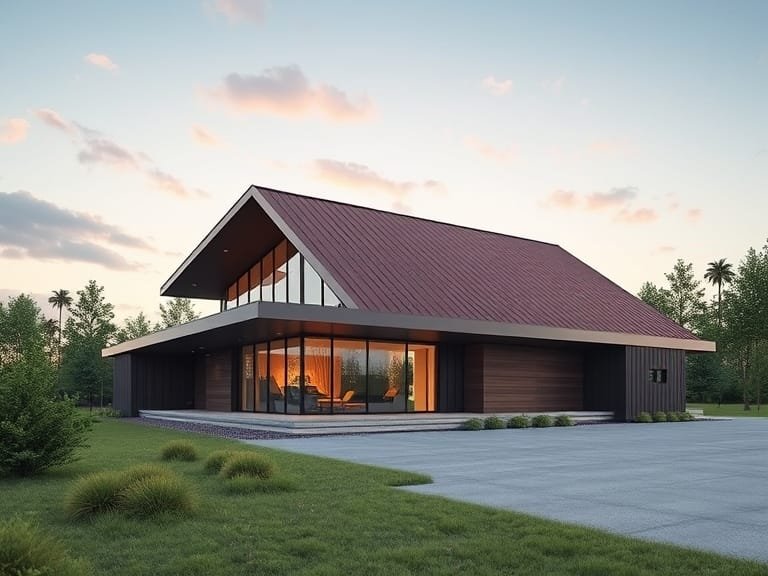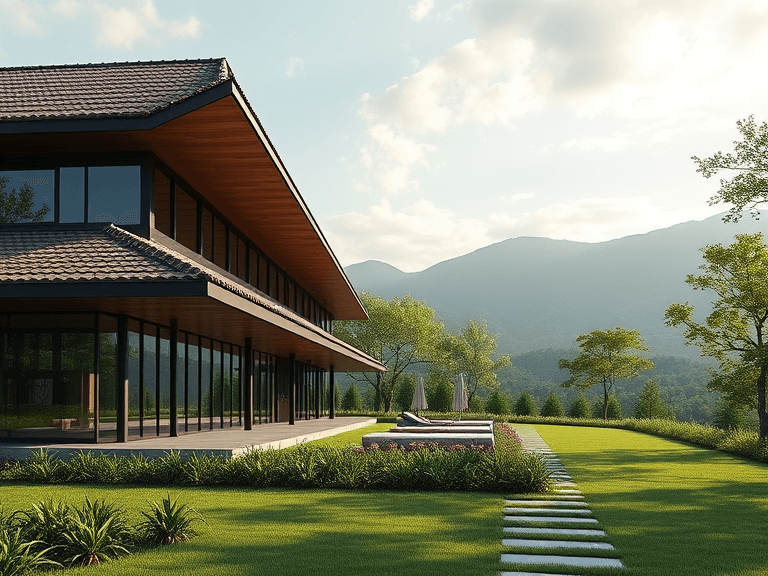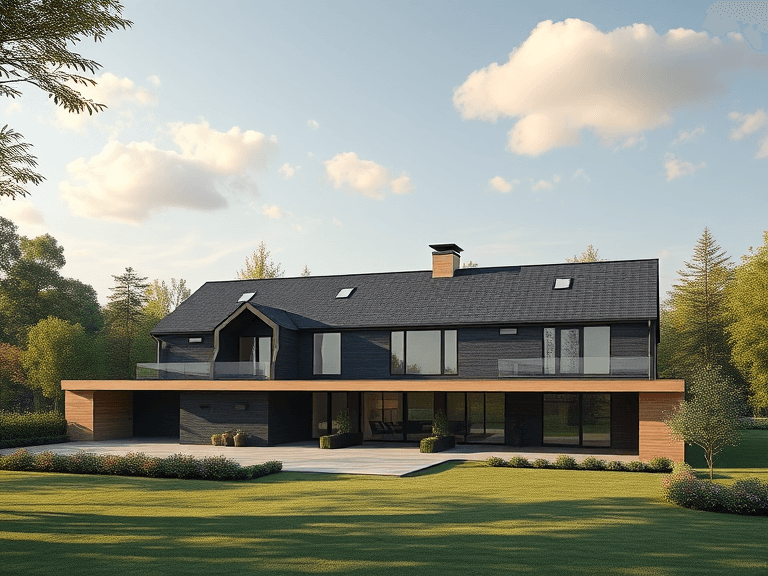
Metal roofing has gained significant popularity among homeowners due to its durability, energy efficiency, and aesthetic appeal. This roofing option encompasses a variety of materials, with steel, aluminum, and copper being the most common. Steel roofing, often galvanized or coated to prevent rust, is favored for its strength and affordability. Aluminum roofing is known for its corrosion resistance, making it ideal for coastal environments. Copper roofing, while often more expensive, adds a distinctive elegance and longevity to structures.
One of the main reasons metal roofing is becoming a preferred choice is its ability to withstand harsh weather conditions, such as heavy winds, rain, and snow. Unlike traditional shingles, metal roofs typically last longer, with a lifespan that can extend beyond 50 years. This resilience translates into reduced maintenance and replacement costs, providing homeowners a compelling argument for investing in metal roofing systems.
Furthermore, metal roofs can contribute to improved energy efficiency. Many metal roofing options come with reflective coatings that help reduce heat absorption, keeping homes cooler during the summer months. This not only enhances comfort levels but can also result in lower energy bills, highlighting one of the advantages of installing metal roofing.
While metal roofing offers several benefits, it is essential to recognize that there may be disadvantages as well. For instance, the initial installation cost can be higher compared to traditional materials, and some homeowners may experience noise during rainstorms. Additionally, the expansion and contraction of metal materials can lead to issues if not installed correctly. Understanding both the advantages and disadvantages of installing metal roofing is crucial for homeowners considering this investment.
Advantages of Metal Roofing
One of the primary benefits of installing metal roofing is its exceptional durability. Unlike traditional roofing materials such as asphalt shingles, metal roofs can withstand extreme weather conditions, including heavy rainfall, strong winds, and even hail. This resilience ensures that they do not easily chip, crack, or warp, leading to a longer lifespan. In fact, many metal roofs can last 50 years or more, significantly reducing the need for roof replacement over time, which is a major consideration for homeowners.
Moreover, metal roofing is recognized for its energy efficiency. Reflective coatings can be applied to metal panels, which increases their ability to reflect sunlight and reduce heat absorption. This characteristic can help lower cooling costs during the hotter months, ultimately resulting in significant savings on energy bills. By contributing to a more energy-efficient home, metal roofs not only enhance comfort but also support environmental sustainability.
Low maintenance is another critical advantage of installing metal roofing. Unlike other roofing options that require frequent inspections and repairs, metal roofs typically require minimal upkeep. Routine cleaning and occasional inspections are usually sufficient to keep them in good condition. This reduces not only the labor costs associated with maintenance but also the hassle of managing repairs over time.
Additionally, metal roofing offers a wide variety of styles, colors, and finishes, making it an attractive choice for homeowners with diverse aesthetic preferences. Whether one prefers the look of traditional shingles, sleek standing seam, or tile-like appearances, metal roofing can be customized to suit the architectural style of any home. As a result, the visual appeal of metal roofing, combined with its practical benefits, contributes to an overall cost-effective solution that enhances property value.
Disadvantages of Metal Roofing
While metal roofing offers a variety of benefits, it is essential to consider the potential downsides associated with its installation. One of the most prominent disadvantages is the higher upfront cost. Compared to traditional roofing materials such as asphalt shingles, metal roofs can be significantly more expensive. This initial investment can be a deterrent for homeowners operating on a tight budget. However, it is important to weigh this cost against the long-term durability and lifespan of metal roofing, which may lead to savings in maintenance and replacement expenses over time.
Another concern pertains to noise. Metal roofs can amplify sounds during heavy rain or hail, potentially creating an uncomfortable environment inside a dwelling. This acoustic effect arises from the panels’ structure, which lacks the sound absorption qualities of traditional materials. Although some homeowners may find the noise from rain or hail charming, others may view it as a considerable drawback, particularly in regions prone to severe weather.
Additionally, metal roofs are subject to expansion and contraction as temperatures fluctuate. This characteristic can lead to potential issues with the roof’s fasteners, resulting in loose panels over time. Homeowners need to ensure proper installation techniques to mitigate this issue, including using appropriate fasteners capable of accommodating movement while preventing leaks. Furthermore, while metal roofing is durable, it can be susceptible to denting from hail or falling branches. Though modern metal roofs are designed to withstand moderate impacts, severe weather can still result in damaging effects that may require repairs.
In conclusion, while the advantages and disadvantages of installing metal roofing must be evaluated, it remains vital for homeowners to thoroughly assess their specific needs, budgets, and preferences before deciding on roofing materials. By understanding the potential drawbacks, homeowners can make informed choices about their roofing systems.
Cost Comparison: Metal Roofing vs. Traditional Roofing Materials
When evaluating the advantages and disadvantages of installing metal roofing, cost often plays a pivotal role in the decision-making process. Metal roofing typically presents a higher upfront cost compared to traditional roofing materials like asphalt shingles, wood shakes, and tile. On average, metal roofing can range from $120 to $900 per square, while asphalt shingles can be acquired for as low as $90 to $100 per square. Although this essential cost difference may deter some homeowners, it is important to consider the long-term financial implications.
Installation costs also vary significantly between metal roofing and conventional options. While the installation of traditional materials may be more straightforward for contractors, high-quality metal roofing requires specialized skills. This may lead to increased labor costs, but it is also indicative of the durability and longevity that metal roofs provide. Proper installation can help mitigate future repair costs, which is a crucial factor when weighing the total expenses of a roofing project.
Another consideration is the impact on homeowners’ insurance. Generally, metal roofs offer better resistance to severe weather conditions, which could lead to potential discounts on premiums due to reduced risk. Conversely, traditional roofing materials may necessitate more frequent replacements and repairs, ultimately resulting in higher long-term costs related to insurance and maintenance.
In terms of maintenance, metal roofing generally outperforms its traditional counterparts. While asphalt shingles and other materials may require more frequent upkeep and eventual replacement, metal roofs are renowned for their longevity, lasting upwards of 50 years with minimal maintenance costs. By investing in a metal roofing system, homeowners may realize considerable savings over time despite the initial expense.
Environmental Impact of Metal Roofing
Metal roofing has gained recognition for its significant environmental benefits, making it a sustainable option for homeowners and builders alike. One notable advantage is its recyclability. Unlike traditional roofing materials, which often end up in landfills, metal roofing can be recycled at the end of its life cycle. This characteristic not only reduces waste but also conserves natural resources, as recycled metal can be repurposed into new roofing materials or other metal products.
Another essential aspect of the environmental impact of installing metal roofing is its energy efficiency. Metal roofs are known for their reflective properties, which help in reducing heat absorption. This reflective nature can lead to lower energy consumption for cooling during hot months, subsequently decreasing greenhouse gas emissions from power plants. Homeowners can expect a reduction in energy bills, as cool metal roofs contribute to lower indoor temperatures, reducing the reliance on air conditioning and promoting an efficient energy use.
Moreover, metal roofing materials often have a longer lifespan than traditional options such as asphalt shingles. With an extended lifespan, metal roofs mitigate the frequency of roof replacements, minimizing the need for materials and reducing associated transportation emissions. This durability not only contributes to the economic advantages but also underscores the commitment to sustainability.
In addition to their energy efficiency and recyclability, metal roofs can enhance the overall sustainability of a building. By deploying metal roofing solutions, property owners can play a valuable role in reducing energy consumption over time, which aligns with global sustainability efforts. Adopting metal roofing is, therefore, a practical choice for environmentally conscious individuals seeking to improve their carbon footprint while enjoying long-term functionality.

Aesthetic Appeal and Design Choices
The aesthetic appeal of metal roofing can significantly enhance the overall design of a home. Today’s metal roofing comes in a wide range of styles, colors, and finishes that can cater to diverse architectural preferences, making it an increasingly popular choice for homeowners seeking both functionality and a refined appearance.
Various styles of metal roofing are available, including standing seam, corrugated panels, and metal shingles. Each style offers unique visual characteristics, allowing homeowners to select a design that complements their residence’s architectural framework. For example, standing seam roofs are known for their sleek, modern lines and are ideal for contemporary homes, while metal shingles can evoke a traditional look that harmonizes well with classic architectural styles.
The color palette for metal roofing is expansive. With options ranging from muted tones like gray and brown to bold colors such as red and blue, homeowners can choose a color that either discreetly blends with the surroundings or makes a powerful statement. Moreover, manufacturers offer various finishes, including matte, glossy, and textured surfaces, each contributing to the roof’s aesthetic and performance. For instance, a metallic finish can reflect light and enhance energy efficiency, while a matte finish may provide a more subdued effect that echoes organic materials.
Importantly, metal roofing is versatile enough to complement various architectural designs, whether it be a rustic cabin, a modern minimalist home, or a traditional colonial structure. Its ability to seamlessly integrate with different styles can greatly increase curb appeal, making metal roofing an attractive option for those looking to elevate their home’s exterior design. Therefore, when considering the advantages and disadvantages of installing metal roofing, the aesthetic variety it offers is a significant factor in its favor.
Installation Process and Considerations
The installation of metal roofing involves a systematic approach that ensures durability and performance. Initially, homeowners should prepare the roof deck, which includes removing the existing roofing material, inspecting for damage, and making necessary repairs. A solid deck is crucial as it provides a stable base for the metal roofing. Depending on the type of metal chosen—such as steel, aluminum, or copper—different materials may be required to achieve optimal results with the installation.
Key materials needed for metal roofing installation include metal panels, underlayment, flashing, and fasteners. Underlayment acts as a moisture barrier, protecting the roof from water infiltration. Flashing is critical for areas prone to leaks, such as valleys and around chimneys, ensuring that these spots are sealed properly. To secure the panels, various fasteners, including screws or clip systems, should be selected based on the metal type and local building practices.
Given the complexity of the installation process, hiring qualified professionals to install metal roofing is highly advisable. Experienced contractors possess the knowledge and skills necessary to handle the varying types of metal roofing, as well as the specifics associated with local building codes and regulations. They can navigate potential challenges during installation, which may arise from factors such as the roof’s pitch and design.
Homeowners should also consider their local climate when deciding on metal roofing. Different metals offer varying degrees of performance in terms of thermal expansion and contraction. Furthermore, understanding local building codes is essential to ensure compliance and avoid costly fines. Lastly, assessing the existing roof structure is critical, as some homes may require additional reinforcements to support the weight of metal roofing. Such due diligence can help maximize the advantages and disadvantages of installing metal roofing, leading to a successful project.
Maintenance Tips for Metal Roofing
Proper maintenance of metal roofing is essential for prolonging its lifespan and maintaining its aesthetic appeal. Homeowners should consider implementing routine inspections as a foundational aspect of metal roof care. It is advisable to conduct these inspections at least twice a year, ideally in the spring and fall, when weather conditions are more stable. During these inspections, look for loose panels, punctures, and damaged seams. Addressing these issues promptly can prevent more significant damage and costly repairs later.
Cleaning is another vital maintenance step to consider. Metal roofs can accumulate dirt, leaves, and other debris, which may lead to water pooling and potential rust. Homeowners can use a soft-bristle broom or blower to gently remove debris. For more stubborn stains, a solution of water and mild detergent can be applied with a soft cloth or sponge. However, it is crucial to avoid using harsh chemicals that could damage the roofing material’s protective coating.
Rust and corrosion are common concerns with metal roofing that need to be managed proactively. To reduce the risk of rust, ensure that there are no areas where water can collect, as standing water promotes corrosion. If rust is already present, it is advisable to sand the affected area to remove the rust, then apply a suitable primer and touch-up paint to protect the exposed metal. Additionally, ensure that gutters and downspouts are clear to facilitate proper water drainage, further reducing the chances of rust formation.
Implementing these maintenance tips will help homeowners understand the advantages and disadvantages of installing metal roofing, ensuring their investment remains sound over time. Regular upkeep can significantly contribute to the roof’s durability, making it a wise choice for those looking to enhance their home’s resilience.
Final Thoughts: Is Metal Roofing Right for You?
Choosing the right roofing material for your home is a significant decision, and understanding the advantages and disadvantages of installing metal roofing is essential to making an informed choice. Metal roofing offers numerous benefits, including durability, longevity, and energy efficiency. Its ability to withstand severe weather conditions makes it a popular option in areas prone to storms and high winds. Furthermore, metal roofs can reflect solar radiant heat, which can lead to reduced energy costs, particularly in hotter climates. This eco-friendly aspect also aligns with increasing consumer demand for sustainable building materials.
However, it is crucial to consider the disadvantages of metal roofing as well. One of the primary concerns is the initial installation cost, which can be higher than traditional roofing materials. Additionally, while metal roofs are designed to last for many years, they may require specialized installation to ensure optimal performance and aesthetics. Homeowners should also consider the noise levels associated with metal roofing during rain or hailstorms, which can be a significant factor for some individuals. Moreover, depending on the style of the home, some may find that metal roofing does not suit their design preferences.
Ultimately, the decision to install metal roofing should be based on your specific needs, budget, and aesthetic preferences. Conducting thorough research on the advantages and disadvantages of installing metal roofing will help you evaluate whether this option aligns with your home renovation goals. It might also be beneficial to consult with a professional roofing contractor who can provide insights based on your unique situation. Weighing these aspects will aid you in determining if metal roofing is the right choice for your property, blending practicality with personal style.


